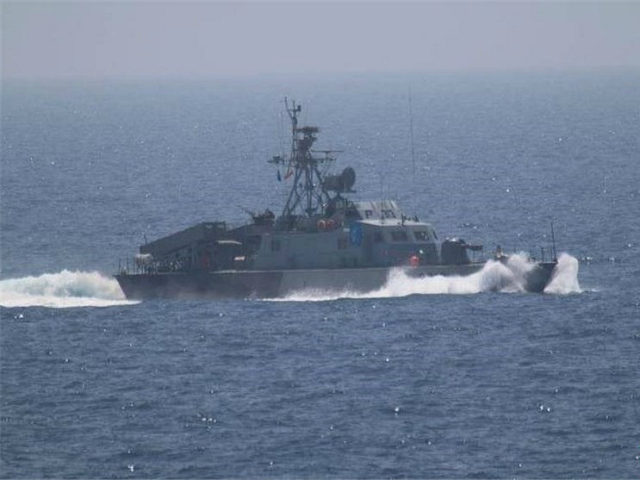CNN reports that General Joseph Votel, top officer of the U.S. Central Command, “got an unexpected, up close and personal look Monday at the Iranian Revolutionary Guard Corps Navy.”
Votel was aboard the USS New Orleans, heading south through the Strait of Hormuz, when five armed Iranian ships closed on him to within 500 yards, in two separate encounters. CNN describes one of them as a Houdong-class patrol boat, which means it could have been carrying Silkworm anti-ship missiles.
Unlike some of the hair-raising recent incidents between American aircraft and Russian or Chinese jet fighters, this close encounter with Iran’s navy was deemed “safe” by the U.S. Defense Department. However, Votel himself told reporters there is “great opportunity for miscalculations,” given the speed and power of modern naval weapons.
“We don’t always have a lot of time to deal with those interactions. I think what we’ve probably learned here today is that it’s measured in minutes,” said Votel.
A U.S. defense official told CNN there was “at least one bridge-to-bridge communication between the Americans and Iranians,” without divulging the details.
The Wall Street Journal reports the U.S. military took the unusual step of releasing photos of the Iranian craft, taken by the crew of the New Orleans and the destroyer USS Stout.
“Iranian officials in a report in state media confirmed that speedboats operated by the Islamic Revolutionary Guard Corps navy ‘escorted’ the U.S. warships through the strait, defending the incident as longstanding practice. The news account, on the website of the semiofficial FARS news agency, also warned that the small but heavily armed boats could destroy the American vessels,” the Journal relates.
“Monitoring foreign vessels in regions where the IRGC Navy conducts its missions is not a new thing and it is always done on a routine basis and round the clock,” said IRGC Navy lieutenant commander Gen. Alireza Tangsiri, before slamming the United States as an “enemy of the Islamic Revolution” and “the Great Satan,” which is also something Iran does around the clock.
Commander Bill Urban, a spokesman for the U.S. Navy’s Fifth Fleet, told the Journal there were about 300 “interactions” with Iranian vessels in 2015, some of them involving harassment tactics such as approaching at high speeds, or even targeting U.S. ships with their weapons.
“Navy officials essentially grade Iranian naval behavior on a curve. They said that the way the Iranians behave typically, even when they don’t actually harass American warships, is still not the way most professional navies behave at sea,” the WSJ observed.
The USS New Orleans was in international waters at the time of its encounter with the Iranian vessels. The Defense Department has said there is no indication the Iranians knew Gen. Votel was on board.

COMMENTS
Please let us know if you're having issues with commenting.